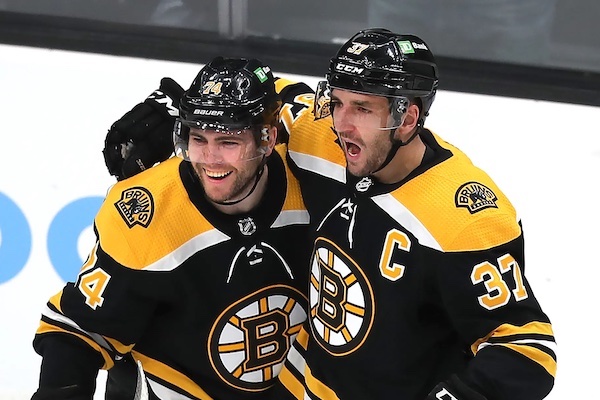
By: Ryan Duffy | Follow Me On Twitter @Rduffy26
With the NHL trade deadline approaching next week on Friday, March 3rd, significant trades and rumors throughout the league have been heating up, specifically in the Eastern Conference. With the New York Islanders landing Bo Horvat, New York Rangers acquiring Vladimir Tarasenko, and Toronto Maple Leafs adding Ryan O’Reilly, the arms race in the Eastern Conference has become increasingly competitive. Don Sweeney and Boston’s management have yet to make a move to bolster their roster, but they have been linked to a couple of different players on the market in a potential trade.
With a 43-8-5 record, the Bruins have been atop the NHL standings since game one of the 2022-23 regular season. Not only do they have the best record, but Boston is also first in the NHL in goals against (115 goals) and second behind the Edmonton Oilers in goals for (208 goals). With the amount of success the Bruins have had this year, what should they do at the deadline to improve their team?
When the Bruins went to the Stanley Cup Finals in 2011, 2013, and 2019, management made vital moves at the trade deadline to reinforce depth over landing star players. In 2011, Boston acquired two versatile forwards in Chris Kelly and Rich Peverley, then later traded for offensive defenseman Tomas Kaberle. Boston went on to win their first Stanley Cup since 1972 that year, and all three players played crucial roles in their journey to winning it all.
At the 2013 trade deadline, Boston acquired forward Jaromir Jagr, who was at the tail end of his legendary NHL career, and defenseman Wade Redden. Bruins’ management traded for both players to add experience and depth to their roster. While Redden only appeared in five playoff games, Jagr played alongside Patrice Bergeron and Brad Marchand on the second line to fill the role that Mark Recchi left when he retired in 2011. While they ultimately went on to lose in the finals to the Chicago Blackhawks in six games, Jagr was a solid piece to add to the Bruins’ middle-six forward group as he recorded ten assists in the playoffs.
Then, Boston acquired Charlie Coyle and Marcus Johansson at the 2019 trade deadline. Coyle and Johansson were paired on the third line with Danton Heinen and were, at times, Boston’s best line in the Playoffs. Coyle tallied an impressive nine goals and seven assists that postseason while Johansson recorded four goals and seven assists. The team lost in game seven of the Stanley Cup Final to the St. Louis Blues, but Coyle and Johansson immediately showed strong chemistry together and gave Boston their deepest lineup in recent history.
One can also look at the recent Stanley Cup champions, as the Tampa Bay Lightning (2020 and 2021) and Colorado Avalanche (2022) both made depth transactions at the trade deadline. For the Lightning, they traded for Blake Coleman and Barclay Goodrow in 2020. Both players were instrumental for the Lightning, scoring key goals and playing critical minutes en route to their back-to-back Stanley Cup championships.
On the other hand, the Avalanche added depth forwards Andrew Cogliano, Artturi Lehkonen, Nico Sturm, and defensive defenseman Josh Manson in 2022. They further improved their lineup by solidifying their offensive and defensive depth. The trend of adding smaller pieces heading into the Stanley Cup Playoffs proves to be the answer in making a deep run.
While big names such as Patrick Kane and Jakob Chychrun are very intriguing, the cost of high caliber players has gradually become less affordable for Boston. The Bruins are one of the deepest teams in the NHL right now and reinforcing their bottom-six offense and bottom-four defense would only make this team more dangerous heading into the Stanley Cup Playoffs.


Leave a Reply